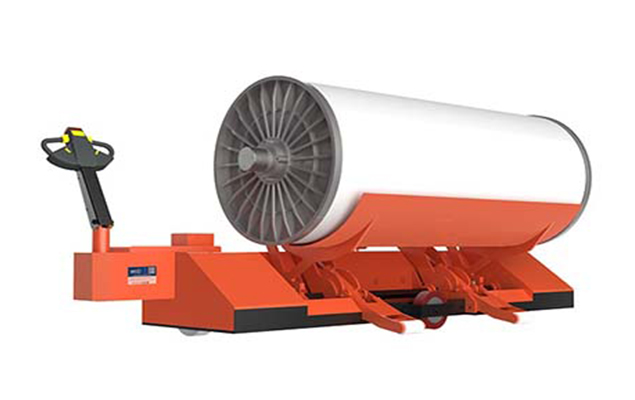The material handling equipment has a great significance in production, mainly because the large amount of material handling work. In some iron and steel industry, It needs to handle over 50 tons of raw material, semi-finished products, fuels, wastes and finished products for the production of 1 ton steel.
Creation Signification
For many industrial countries, the cost of material handling often accounts for about 25% of the whole product cost and for the enterprises with a low degree of mechanization, porters often account for over 15% of the total number of workers. It is logical to use material handling equipment to carry heavy objects that cannot be carried by human beings and to work in areas with high temperature or radioactive substances. Therefore, we should pay attention to the material handling system during the production process. And applicable material handling equipment should be used as much as possible to for reducing labor intensity & product damage, also for protecting workers' health and improving labor productivity and product quality.
Development History
Modern material handling equipment began in the 1990s. Around the 18th century, steam engine-driven hoisting equipment and conveyors appeared; due to the application of internal combustion engines,material handling machinery developed rapidly at the end of the 19th century. In 1917, a forklift that could both lift and carry has been created out then it comes to the 1970s, the computer-controlled material handling equipment system that appeared, which brought material handling into a stage of highly automated operations.

Basic Classification
According to the functions, the material handling equipment can be roughly divided into 5 categories: lifting equipment, conveyors, loading and unloading machinery, handling vehicles and storage equipment.
1. Lifting Equipment.
It is used for material lifting and handling but only suitable for the short handling distance, and its mechanism moves intermittently;
2. Conveyor
The conveyor can continuously transport materials in a generally fixed handling route. Most of them are used to transport bulk materials.
3. Loading And Unloading
This kind of machine has the function of loading and unloading materials automatically.
4. Handling Vehicle
They can arrange the handling route flexibly, and the economical transportation distance can be long for working needs. It can work indoors or outdoors, and it has driving wheels.
5. Storage Equipment
The storage equipment is a device that completes stacking, fetching, and storing materials in warehouses, including silo devices, high-bay warehouses and feeders. feeder, etc. With the development of industry, many machines have multiple functions for using.
Beneficial Effect
All the material handling equipment serve production line and are designed and selected to meet different needs in the production process and in the other side, the creation of new material handling equipment also often leads to changes and improvements in production processes. For example, the appearance of the bucket wheel stacker and reclaimer has formed a handling system of automated large bulk material yard with the bucket wheel stacker and reclaimer as the heart, the belt conveyor as the blood vessel, and the electronic computer as the nerve center, thus changing the port, the layout of bulk material yards in mines and thermal power plants. The material handling equipment can transfer the semi-finished products of the previous process to the next process directly and automatically, and it connects many upper and lower processes into a system, which forms a rhythmic production. Also it has the function of making the materials clean and dry during the handling process, which can reduce the number of loading and unloading, shorten the production cycle and save equipment investment. In many production and operation processes, material handling equipment is no longer a separate machine, but an integral part of the entire process. When researching and selecting material handling equipment, it is not only necessary to understand the characteristics of the material, the purpose and requirements of handling, and whether the environment is disturbed and polluted during operation, but also must be considered in combination with the entire production or operation process so that the handling equipment can be compared with its predecessors.




